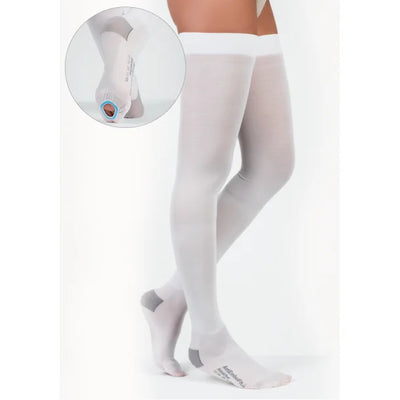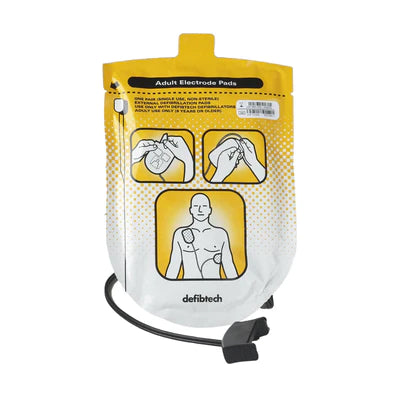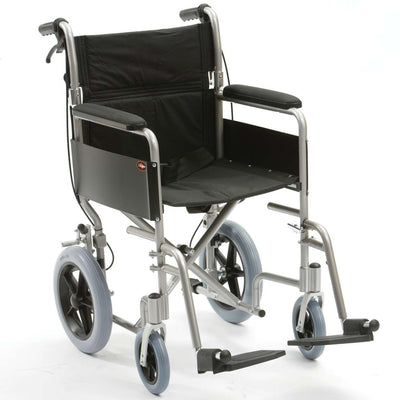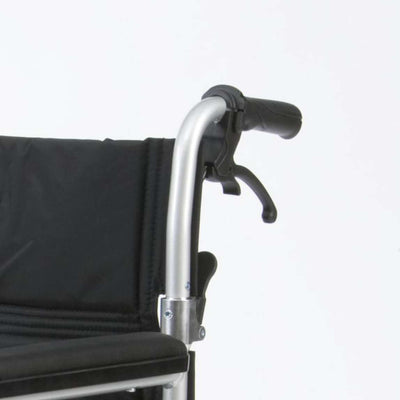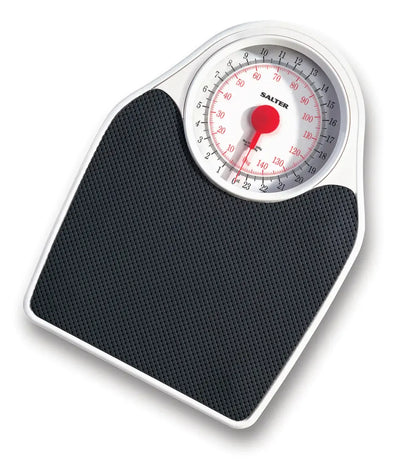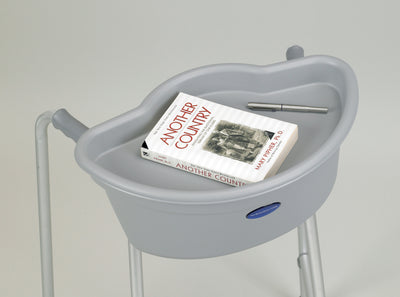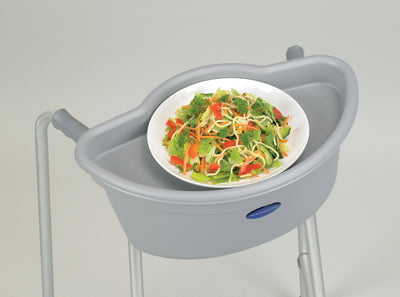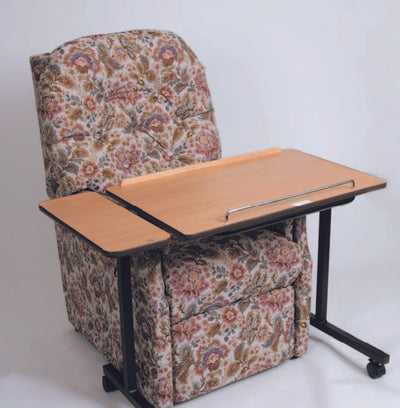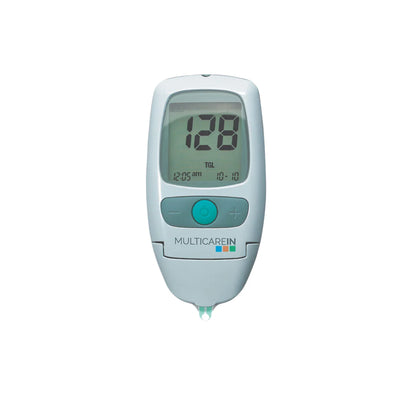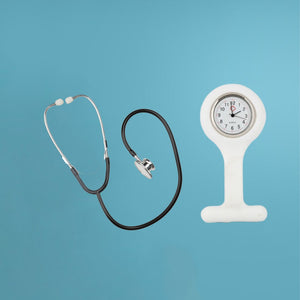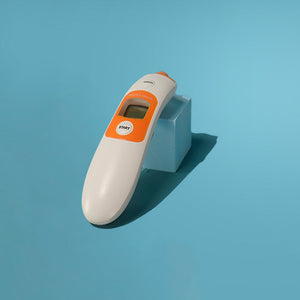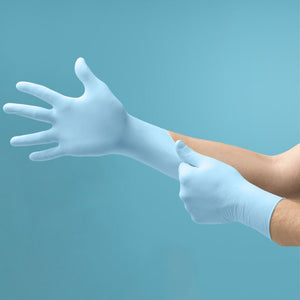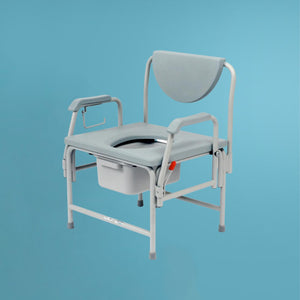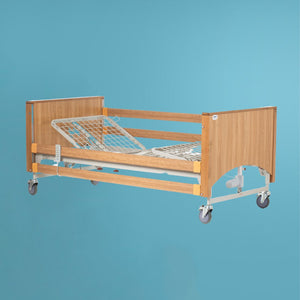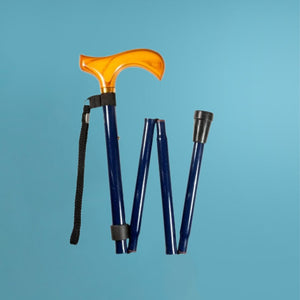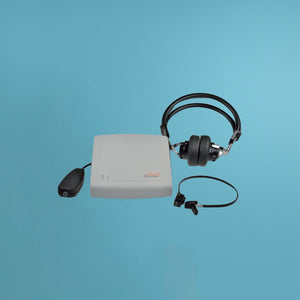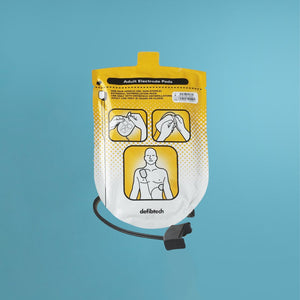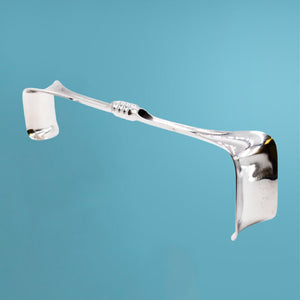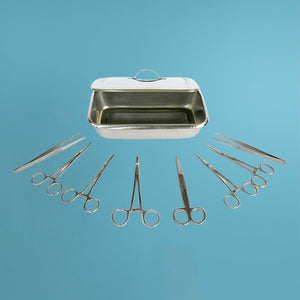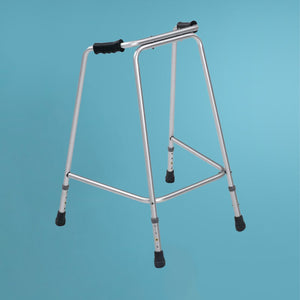Blogs
Precision in healthcare; advanced diagnostic sets for accurate, informed decisions.

Cholesterol Testing at Home
27.09.2023
Did you know that having high cholesterol makes you much more likely to have a stroke or a serious heart condition? Yet, there are NO symptoms to look out for that would indicate your cholesterol levels are on the rise. In fact, blood testing is the only way to know what your cholesterol levels are doing.
So, regular cholesterol testing is the best way to make sure you’re keeping heart-healthy and free from elevated risk of disease and stroke.
The good news is that it's really straightforward to test your cholesterol at home.
Cholesterol Facts
High cholesterol is when you have too much of a fatty substance called cholesterol in your blood
We need cholesterol in our blood to stay healthy - but when it gets too much it causes problems
There are two main types of cholesterol
LDL cholesterol is often called ‘bad cholesterol’ because too much of it can clog up your arteries and lead to health problems later on.
HDL cholesterol is often called ‘good cholesterol’ because it carries cholesterol away from your cells, back to your liver to be broken down. So, it helps prevent disease.
High cholesterol is mostly caused by lifestyle choices such as eating fatty foods, not exercising enough, being overweight, smoking and drinking alcohol. It can, however, run in families.
High cholesterol can be reversed with better food choices, more exercise and a healthier lifestyle. For some, prescription medicine can help too.
Taking a cholesterol test at home
While testing for cholesterol in a medical environment usually involves taking a larger blood sample from the arm, most home cholesterol testing kits use the finger-prick method which can be useful or preferable for anyone who is anxious about regular blood tests.
Your at-home cholesterol test will require you to put a drop of blood from your finger onto a cholesterol strip test paper which is then inserted into the machine. Your reading will be displayed within just a few seconds.
Always read the instructions on your home cholesterol testing kit.
Firstly make sure your hands are clean and dry - especially in the area you will be taking the blood sample from. Leftover water or soap etc can make your results inaccurate.
Do not squeeze your finger too much to encourage more blood - this can also affect the results.
Always dispose of any sharps, used to puncture the skin, safely.
Regular monitoring can be useful for long term health. It is recommended, though, that you follow up your at home test with a further diagnostic test from your GP or pharmacist.
What happens next?
If your test indicates that your cholesterol levels are high you should discuss your options with your GP or nurse. They will work out your risk of having a heart attack or stroke in the next 10 years and give you a plan of action to help reduce that risk.
Regular testing really can help to reduce your risk of serious heart disease and help you to live a healthier life.
Need more help? We're always here to help so get in touch today.
For all your Medical and Homecare supplies give us a call at Mediworld.
We have over 40 years experience in medical, surgical, mobility and home health supplies and we're always on hand to chat if you need support or advice and don't forget to read our other great health blogs!
February 2023
Learn More Now
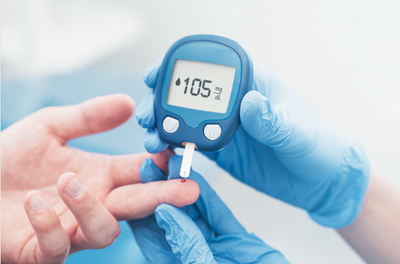
Blood Glucose Monitors - What to Look for When Buying One
27.09.2023
If you have type 1 or type 2 diabetes, keeping an accurate idea of your blood glucose levels will be an integral part of your health management. Using a blood glucose monitor will be an important piece of kit that you’ll use to do that.
With many different types of meters on the market you'll want to check with your GP or nurse which options would be best suited to you. Here are some things to consider when choosing your own blood glucose monitor:
Is it easy to use?
Testing procedures will vary for each blood glucose meter. Some will require more work than others, some will need a larger blood sample for an accurate reading while others might require more set up to record and manage the readings. Be sure to check these details before choosing your meter.
The digital interface and features on blood glucose monitors will also vary quite significantly across the board. So, when choosing a meter, you may need to decide whether you need more features or whether you need a meter that has advanced features but is simpler to use.
Another basic thing to check for is how easy it is to read & how easily you can source spare glucose testing strips for your specific meter.
How long does it take to get a reading?
Most glucose monitors will give a reading within less than 60 seconds. This might seem very quick, but if you’re testing regularly each day you might want to minimise your testing time and look for a meter that provides a reading in just 5-10 seconds.
Is it portable and can I test on the go?
All blood glucose monitors are portable but some do require you to place the kit down on a surface while you test, while others may enable you to test as you move around - which can be a useful feature for busy people who need to test regularly each day.
Does it record my readings?
Most blood sugar meters allow you to save your results and with many you can use an app on your cell phone to track your levels. If your meter doesn’t connect to an app, or you don’t have a smartphone, you will have to keep a daily, written record of your results so you can discuss your ongoing health with your GP or consultant at each appointment.
However, if you know you’ll be on the go and have a hard time keeping track of your numbers, look for a meter that has memory options. Some meters create logs that you can retrieve at a later time. Some even create a very handy, downloadable file that syncs with your computer and can be emailed directly to your doctor or nurse.
Just make sure that your meter time and date are set up correctly.
Do I need any extra special features?
You might need extra features to make your daily testing more manageable and straightforward. Here are some options that are available in blood glucose meters and monitors:
audio capability, for people with vision impairments
backlit screens, which make reading at night or in low light easier
various amounts of memory storage
different handling capabilities, such as having the strips stored in the meter, or having a USB meter
meters that record carbohydrate grams and insulin doses with the glucose reading
meters that can test blood ketone levels as well as blood glucose levels
Need more help? We're always here to help so get in touch today.
For all your Medical and Homecare supplies give us a call at Mediworld.
We have over 40 years experience in medical, surgical, mobility and home health supplies and we're always on hand to chat if you need support or advice and don't forget to read our other great health blogs!
December 2022
Learn More Now
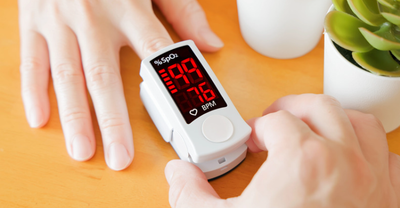
How to Read a Pulse Oximeter at Home
03.10.2023
Since the outbreak of the Covid-19 pandemic the pulse oximeter has become an absolute essential item in our home first-aid kits. An oximeter is a great tool that helps identify serious illness at an early stage and can be used very easily at home.
But how exactly do you use it and what do the readings really mean?
What is a Pulse Oximeter?
A pulse oximeter is a small, battery operated device designed to give you a reading of your blood oxygen levels and heart rate in just a few seconds. You simply place your finger inside the device (or in some cases on your ear lobe) and, like a digital thermometer, it will display your numbers in real time.
What does is measure?
An oximeter measures the oxygen saturation in your blood, and since oxygen is the most critical element for the normal functioning of our organ cells, maintaining & monitoring the right levels is incredibly important.
When our oxygen saturation levels drop, the heart, kidney, and brain are the most affected organs and can result in symptoms like coughing, wheezing, confusion, rapid heartbeat and chest pain. A low reading is a good indication that the patient should be treated immediately by a doctor.
How to Use your Pulse Oximeter
Make sure you’ve read the manufacturer's instructions well before use.
Attach the oximeter to your index, middle or ring finger and make sure it fits well (not too loose, not too tight). Be sure to remove any nail polish beforehand as it can affect the reading.
The oximeter can also be attached to the ear lobe in some circumstances, where it uses beams of light to measure the oxygen levels in the blood.
Sit down and relax before taking the reading
To get the most accurate reading, allow 20 - 60 seconds for your pulse rate to stabilise and for the oximeter to detect your pulse.
Remove the oximeter and calmly read the measurements on the digital display.
How to Read the Measurements
Your Pulse Oximeter will read and display two main measurements: oxygen saturation and pulse rate.
Oxygen Saturation - this is the amount of oxygen in your blood. You will see this reading as either SpO2 or a % on your monitor’s display.
Between 96%- 99% - this is considered healthy and no action needs to be taken. If the patient remains unwell, regularly monitor their blood oxygen levels and record the measurements.
91% - 95% - this could be a cause for concern and you are advised to seek medical advice.
Less than 91% - seek urgent medical attention by dialling 999. The patient could be suffering from hypoxia, and is in a serious medical situation.
Pulse Rate - this is your heart rate. It will often be displayed on your monitor as PR or PRmin or PR/BPM etc or can sometimes have a heart shaped icon beside it.
The reading for pulse rate normally ranges between 60- 75 BPM for adults and up to 115 for children.
Some pulse oximeters will also display pulse strength or perfusion index, which simply helps you to recognise if your pulse is strong enough to give an accurate reading.
Finally
We often advise people to add a pulse oximeter to their at-home first-aid kits - in fact we wrote about it in a previous blog about first-aid kit essentials.
Understanding blood oxygen saturation levels is very important when using a pulse oximeter at home. Crucially if you record a measurement of 95% or less you should seek medical advice, and if the recording is 90% or less you must treat the situation as an emergency.
Need more help? We're always here to help so get in touch today.
For all your Medical and Homecare supplies give us a call at Mediworld.
We have over 40 years experience in medical, surgical, mobility and home health supplies and we're always on hand to chat if you need support or advice and don't forget to read our other great health blogs!
November 2022
Learn More Now
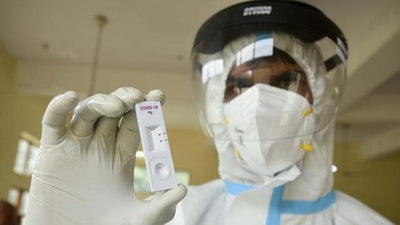
Rapid Antigen Test Kits: Everything You Need to Know
26.09.2023
What Is A Rapid Antigen Test?
Antigen tests are often used to diagnose respiratory pathogens like the flu virus and the respiratory syncytial virus (RSV). Emergency use authorization (EUA) has been given by the U.S. Food and Drug Administration (FDA) for antigen tests that can find SARS-CoV-2.
Antigen tests are immunoassays that look for a specific viral antigen, which shows that a virus is currently infecting the body. Antigen tests can be done on the throat, nose swab, or saliva samples that are put directly into the extraction buffer or reagent of the assay. Antigen tests that are currently allowed include self-tests, tests done at the point of care, and tests are done in a lab.
In short, the Rapid Antigen Test has the following benefits:
Getting a quick result in 15–30 minutes; no need for a follow-up appointment to talk about the result
Easy to use and doesn't require any special training
No additional instruments required
Can be used in areas without quick access to laboratories.
How To Use The Rapid Antigen Test
© SARS-CoV-2 Rapid Antigen Test Package Insert 2021-09, V 2.0.
© SARS-CoV-2 Rapid Antigen Test Package Insert 2021-09, V 2.0.
Collecting Sample - Put a clean swab into the patient's nostril and rotate it 3–4 times against the surface of the nose and throat. Take the cotton swab out of the nose. Be sure to follow the steps in the instructions for use when taking a combined np/op sample.
Preparing a Sample A - Put the swab into a tube with an extraction buffer. Stir the swab more than 5 times as you squeeze the buffer tube.
Preparing a sample B - To get the liquid out of the swab, pull it out of the tube while squeezing the sides of the tube.
Preparing a sample C - Put the nozzle cap on the tube as tightly as you can. Keep going with the next step which is performing a test.
Performing a Test A - Set the test device on a flat surface and put 3 drops of the extracted sample in the specimen well at a 90° angle.
Performing a test B - 15 to 30 minutes later, read the test result.
Warning: The results could be wrong. Don't look at the result of the test after 30 minutes.
Interpreting the Results of Antigen Testing
If the test is working right, a coloured line will show up in the top part of the result window. This is the line in charge (C). Even if the control line isn't very strong, the test should be considered a success. If there is no visible control line, the test is not valid.
If the result is good, a coloured line will show up in the lower part of the result window. This is the line for testing (T). Even if the test line is very faint or not even, the result should still be considered positive.
How To Dispose Of My Antigen Test Kits?
This will depend on the details that come with the tests. Some tests come with a plastic bag where you can put the test materials including the swab. This bag is then put into another bag and thrown away with the rest of your trash. If you don't have any bags, you can put the used items from the test into a small, sealable plastic bag. This bag should be put inside another bag that can be closed and thrown away with the rest of your trash. After you finish the test and throw away the contents of the test kit, wash your hands carefully.
FAQs
How Accurate Are My Rapid Test Results?
Most of the time, positive results are very accurate, but a PCR test may be needed to confirm negative results. Rapid tests work best one to five days after the first sign of a problem.
What Should I Do If My At-Home Rapid Test Is Positive?
If the test shows that you have COVID-19, it is very likely that you do. Talk to your doctor and anyone else who might know you well. No matter if they've been vaccinated or not, everyone who tests positive should stay away from others.
Do you want to buy a rapid test kit that you can trust? Visit Mediworld now!
Learn More Now

5 tips to Manage A Chronic Illness Diagnosis
20.09.2023
Hearing the diagnosis that you have a chronic illness is likely to cause a plethora of emotions and responses. Whether you’re faced with life-long heart disease, diabetes, arthritis, an auto-immune disease or any other chronic condition, you’ll be living with the health implications and treatment for the rest of your life.
So, while you can’t work towards a ‘cure’ you can take the management of your condition into hand. Making the decision to take charge of your own health, and not simply respond to the daily ups and downs of your condition, will help you to feel like you have some level of control over your health and your life.
So here are our 5 top tips on how to manage a chronic condition before it begins to manage you.
Understand the diagnosis
When you’re ready to do so, book an appointment with your specialist and have a full, in-depth conversation about your condition, how it will affect daily life and what you should expect. Do thorough research and ask your specialist about trusted sources of information about your condition. Forewarned is forearmed in the case of dealing with long term health conditions.
Make a plan to invest in yourself
You will almost certainly need to change some aspects of your lifestyle to improve your prospects and your day to day wellbeing. So whether that is quitting smoking, eating more nutritiously, exercising or cutting out stress you should sit down and make a practical plan to change those elements in your life. This is time to consider yourself and your health as a top priority in your life.
Look for the signs
Become more acutely aware of your body and how it works. Get into the habit of measuring and monitoring - if you’re a hypertension sufferer then you should monitor your blood pressure with a home blood pressure monitor, if you’re diabetic you’ll need to keep your insulin levels stable by using a blood glucose monitor or perhaps you simply need to keep an eye on your weight from week to week with an accurate set of home bathroom scales. Start taking note of how you feel on a daily basis, and you might begin to see a pattern of up days and down days. Over time, you’ll begin to spot some of the bad day triggers and be able to manage and avoid those.
Manage your Medication
Most chronic conditions will come with a lifetime of medication, often several tablets per day. So, before the list of tablets and times start to take over invest in a practical system for your day to day schedule like a pill organiser or a digital pill reminder kit. Mark your calendar at the start of the year with dates you should be aware of for renewing medication prescriptions, as well as rough times for when to expect your next medical appointments and check ups.
Seek help
Managing a life-long condition will, at times, feel overwhelming. You will also have to expect periods of illness when you are less able to keep on top of everything. So, it’s essential that you reach out and ask for help early on in your diagnosis. Tell family and friends about your symptoms and treatment, and let them know what you might need help with. Seek out support groups, often these will be your most useful sources of information and support. Chatting to others in the same position can help you to understand your own symptoms better as well as help you to know that you’re not alone. Your GP should be able to put you in touch with local support groups, Facebook groups or charities dealing with your particular condition. Use them - you might even help someone else.
Need more help with your home health supplies? We're always here to help so get in touch today.
For all your Medical and Homecare supplies give us a call at Mediworld.
We have over 40 years experience in medical, surgical, mobility and home health supplies and we're always on hand to chat if you need support or advice. Follow us on Twitter and Facebook and don't forget to read our other great health blogs!
Learn More Now
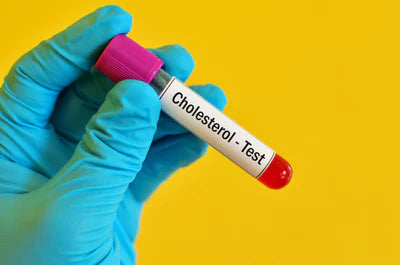
Keep your Cholesterol in Check
02.01.2024
Cholesterol gets a very bad reputation but we actually need cholesterol in our blood to stay healthy. However, when our cholesterol levels get too high we start to put our health at some serious risk.
So how do you know if you’re in danger of having high cholesterol and what can you do to avoid it or bring your numbers down to a more acceptable level for a healthier life?
What is Cholesterol?
We need cholesterol to survive. It’s a substance that’s formed naturally in our liver. It helps to form part of the walls of the cells in our bodies and we couldn’t survive without it.
Cholesterol aids in the production of sex hormones, provides the building blocks for human tissue and helps with bile production in the liver.
If it’s naturally occurring, why is cholesterol bad for us?
Unfortunately the saying is true - too much of a good thing is bad for you.
When we refer to cholesterol we use two terms - LDL and HDL. Both of these are lipoproteins (compounds made of fat and protein) and their main job is to carry cholesterol around the bloodstream so it can do its job.
While HDL is known as ‘good’ cholesterol, LDL is the one we need to keep an eye on. Having too much LDL running around our bloodstream can lead to a hardening of the arteries. Hard, or plaque covered, arteries can subsequently lead to blood clots, strokes and heart failure.
Keeping an eye on your numbers
The only way to know if your cholesterol levels are ok is to have a blood test at your local GP or, if you’re monitoring your levels regularly, you might use an at-home personal cholesterol testing kit.
For most of us, reading and understanding the blood test results can be very confusing. You’ll receive a number for both HDL and LDL as well as for your overall cholesterol. As a general guide your cholesterol levels should be:
Total cholesterol count under 5 (for most of us)
‘Bad’ LDL under 3
‘Good’ HDL over 1 (but the higher the better)
How to Improve Cholesterol Numbers
If your blood test shows that you have worryingly high cholesterol your GP may well offer you statins to help control the amount of bad LDL in your system. Statins are usually prescribed as a daily medicine and can dramatically decrease your risk of heart attack or stroke.
If your cholesterol levels are high but not worrying enough to prescribe statins you should seriously consider some lifestyle changes to help bring your levels down.If your levels are on the high side you will be unlikely to see them fall if you don’t attempt to change some of the underlying contributing factors.
What can I do to lower cholesterol numbers?
There are several things that affect your cholesterol numbers - many of which we do have control over.
Diet - Eat foods that are low in cholesterol and saturated fats. Include more plant based foods in your diet and make sure you eat 5 portions a day of fruit and veg. Pulses, nuts and wholegrain foods are excellent cholesterol busters. Dairy, eggs and red meat should be eaten in moderation as they are high in dietary cholesterol. But the main thing to limit in your diet is saturated fats like butter, cheese and most fast food products.
Weight - Unfortunately, being slim is no guarantee against having high cholesterol. Cholesterol will happily hide in over- or under-weight bodies. However, it is largely true that if you are overweight and you change your diet to drop excess pounds you will probably be doing your cholesterol levels some good by eating a much healthier diet and improving your lifestyle.
Exercise - Keeping active has more benefits than simply improving your cholesterol but it is a very effective way of lowering your numbers and helping to prevent heart attacks and strokes. Studies have shown that moderate exercise (30 minutes of brisk walking per day for example) can slightly decrease your LDL levels. While 3 x 45 minute bursts of intense exercise per week can have a much more dramatic effect on lowering your LDL as well as raising your ‘good’ HDL levels.
Stop smoking and Lower Alcohol intake - Quitting smoking can increase your ‘good’ HDL levels by up to 10%. Lowering your alcohol intake (e.g. no more than 3-5 units per week for women) will also help to reduce LDL levels and your risk of cardiovascular disease, as well some cancers such as breast cancer.
Unfortunately there are very few outward signs of high cholesterol and often the first sign there is a problem is when a medical emergency like a heart attack or stroke occurs. That’s why it’s so important to maintain a healthy diet and lifestyle as a life-long preventative measure, and to have your cholesterol levels checked regularly with your GP or your at home cholesterol testing kit.
Need more help to improve the disabled access to your business? We're always here to help so get in touch today.
For all your Medical and Homecare supplies give us a call at Mediworld.
We have over 40 years experience in medical, surgical, mobility and home health supplies and we're always on hand to chat if you need support or advice. Follow us on Twitter and Facebook and don't forget to read our other great health blogs!
Learn More Now

Why Lateral Flow Tests Will Get Us Out Of Lockdown
26.09.2023
Social distancing, mask-wearing and regular washing of our hands. Making sure we’re vaccinated when invited to be so. Both of these things are playing a crucial and effective part in the battle against Covid-19.
However, the virus is still spreading, and new outbreaks & variants are regularly occurring, so it’s become hugely important to add one other element into the fight against the spread of coronavirus.
Regular, simple rapid testing.
Why Is Rapid Testing Important?
The roll out of the vaccine programme in the UK has, thus far, proved to be an overwhelming success. To date, over 40 million adults have received at least one dose of vaccination in what has become the biggest inoculation programme the country has ever run. Hospital admission numbers are falling as are deaths, yet the Covid-19 virus continues to spread in the population and symptoms are changing as it does so.
So it’s vitally important that we all play our part and keep testing. In fact, using a lateral flow test kit twice a week at home or work is one of the most important ways we can all play our part in helping our communities and the country at large right now.
What is Rapid Testing?
The introduction of rapid flow Antigen test kits (or lateral flow test) has been a game changer for the overall Covid-19 testing programme both here and around the globe. Rapid testing can be done at home or in the workplace e.g. without the need for a laboratory, and results appear within just 15 - 30 minutes.
Antigen Lateral Flow Test Kits include a handheld swab for taking the sample from the nose and throat, a testing solution which is mixed with the sample and a test strip which produces the final result.
What Does a Lateral Flow Test Kit Detect?
Around 1 in 3 people with coronavirus will experience no symptoms and may be spreading the virus unwittingly. Rapid testing kits detect the disease quickly, meaning positive cases can isolate immediately and limit the spread of the virus.
Regular, twice weekly, rapid testing is one of the simplest and easiest ways we can keep ourselves and our loved ones safe, and help to speed up the route to easing restrictions and returning to a normal life.
Who Should Take a Lateral Flow Test?
Unlike PCR testing which takes place in designated test centres, you can regularly take a lateral flow test even if you have no symptoms. In fact, it’s wholeheartedly encouraged. Everyone over the age of 18 who has no symptoms should be testing twice weekly just now as part of their regular routine.
Many schools and workplaces are already practicing this to great effect. In fact since lateral flow testing kits were made available at the end of last year, over 60 million have been used resulting in thousands of asymptomatic cases being identified. That’s a huge result that has undoubtedly halted and shut down endless routes for the virus to spread.
Let’s Fight the Virus Together
Regardless of whether you’ve been vaccinated or not it’s still so important that we all continue to follow the guidelines AND engage in taking two rapid Covid-19 tests each and every week.
It’s become routine for us to wear masks, keep our distance and wash our hands so let’s start to make home or work testing part of our regular routine as well.
Testing twice weekly works. It’s helping to stop the spread. So make it part of your routine and do your bit to halt the virus and speed up the process to living a normal life once again.
Need a stock of Antigen Lateral Flow kits for your home, office or workplace? We can supply you regularly with kits and all your other medical and health resources too.
We're always here to help so get in touch today.
For all your Medical and Homecare supplies give us a call at Mediworld.
We have over 40 years experience in medical, surgical, mobility and home health supplies and we're always on hand to chat if you need support or advice. Follow us on Twitter and Facebook and don't forget to read our other great health blogs!
Learn More Now
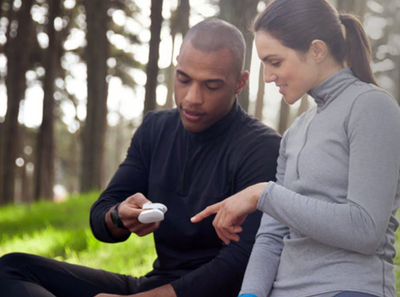
Can a Pulse Oximeter Help Monitor Covid Symptoms at Home?
19.09.2023
Can a Pulse Oximeter help monitor Covid Symptoms at home?
While many people who have been diagnosed with Covid-19 will be able to manage their symptoms when isolating at home, it’s becoming apparent that patients who develop more severe symptoms (resulting in hospital admissions) have much lower than normal oxygen levels in their bodies.
Having the ability to monitor oxygen levels at home and to present at hospital before those levels become perilously dangerous really could be lifesaving in many cases. A simple piece of equipment like a Pulse Oximeter could be a very useful addition to your home first aid kit in cases like these.
What is a Pulse Oximeter?
A pulse oximeter is a small, battery operated device designed to give you a reading of your blood oxygen levels and heart rate in just a few seconds. You simply place your finger inside the device (or in some cases on your ear lobe) and, like a digital thermometer, it will display your numbers in real time. The number displayed is actually a percentage of the oxygen saturation in your blood, and since oxygen is the most critical element for the normal functioning of our organ cells, maintaining & monitoring the right levels is incredibly important. When our oxygen saturation levels drop, the heart, kidney, and brain are the most affected organs and can result in symptoms like coughing, wheezing, confusion, rapid heartbeat and chest pain.A low reading is a good indication that the patient should be treated immediately by a doctor.
What is a normal Oxygen reading?
A normal, healthy oxygen reading will be around 95 to 98 % , although it is possible that someone with an existing medical condition could read slightly lower than this (your GP can keep you informed on your ‘safe’ levels). If your reading falls below 92 this is a sign that something is not right and you should seek attention from your doctor/hospital immediately.
Is it safe to monitor oxygen levels at home?
Absolutely. As with all home devices, however, it’s a good idea to take several readings to make sure that there is a consistency in results. Make sure the hands are warm, not cold, and maybe try recording oxygen levels with the patient being in a couple of different positions - sitting, standing and lying down. You might also like to check the oximeter on a healthy person at home to compare results.Make sure you keep notes on all of these readings to share with your doctor.
That said, it would be unwise to fully rely on a ‘good’ reading as a sign that the patient is completely well. A low oxygen level is not always a sign of impending pneumonia and a ‘good’ reading is also not always an indication that all is well. If the oxygen level is fine but the patient has other symptoms like shortness of breath, a high temperature, confusion etc, then medical advice should still be sought.
What are the benefits of monitoring at home?
Simply put, it is considerably easier and more successful to treat patients with slightly low oxygen levels than it is those with severely low levels. So, if you are monitoring oxygen levels in the comfort of your own home and you do record a consistently low level of oxygen figures, you could avoid a potentially dangerous or life-threatening scenario, such as advanced Covid pneumonia, by attending hospital in good time to receive additional, but straight-forward oxygen treatment.
The benefit of monitoring levels at home is essentially that it can flag a respiratory issue well before the patient is severely unwell, and in need of a space on an already-stretched big dependency ward or intubation unit.
On the flip side, while the patient is in recovery from Covid-19, continuing to monitor oxygen levels can give some real relief if they return as ‘good’.
To order your oximeter unit from us please visit our website.
Need more support? We're always here to help.
For all your Medical and Homecare supplies give us a call at Mediworld.
We have over 40 years experience in medical, surgical and home health supplies and we're always on hand to chat if you need support or advice. Follow us on Twitter and Facebook.
Learn More Now

